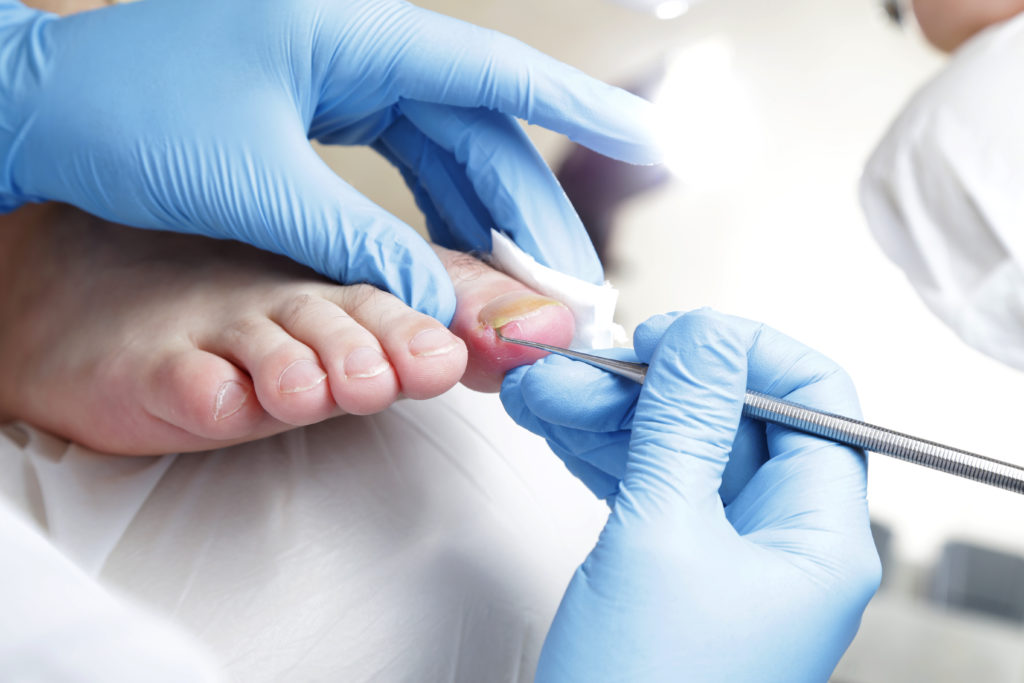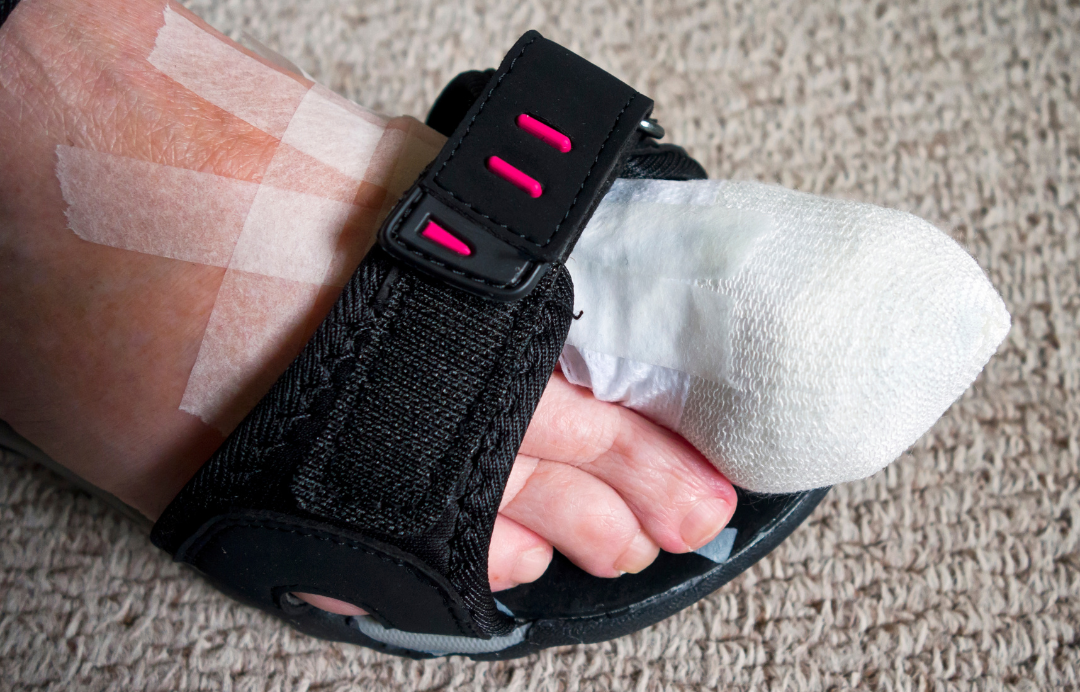For many Kiwis, ingrown toenails are a persistent and painful condition that significantly impacts their daily life. While some cases can be managed with conservative measures like trimming back the nail carefully, either at home or with the help of your podiatrist (recommended) there are instances where a more permanent solution is required. The Partial Nail Avulsion (PNA) procedure is the #1 treatment that offers lasting relief by permanently fixing the problem – but could it be right for you? Here are the signs that indicate that a PNA may be the most suitable course of action for you.
Understanding Ingrown Toenails
Before exploring the signs that your ingrown nail warrants permanent correction, it’s crucial to understand what ingrown toenails are. An ingrown toenail occurs when the edge of the toenail, usually the big toe, grows into the surrounding skin instead of over it. This condition often leads to pain, redness, swelling, and in severe cases, infection. Several factors contribute to the development of ingrown toenails, including improper nail trimming, tight-fitting footwear, trauma to the toe, and having a genetic predisposition. Recognising these causes is essential for preventive care and determining when more aggressive intervention is necessary.
Treating Ingrown Nails
In the early stages of an ingrown toenail, conservative treatments may be sufficient. Gently lifting the ingrown edge with a sterile instrument and trimming it before it has penetrated deep into the skin is one option, although many people wait too long meaning they are unable to remove the nail from the skin. Wearing comfortable, open-toed shoes can provide relief, though it doesn’t address the problem. Soaking the foot in warm water or Epsom salts is another strategy that may offer some temporary relief, though it gets you no closer to lasting improvement or future prevention.
Signs That A PNA Could Be Right For You
Signs that the partial nail avulsion procedure could be right for your ingrown nails include having:
- Recurring Ingrown Toenails: if you find yourself dealing with ingrown toenails on a recurrent basis, it suggests an underlying issue that conservative measures cannot address. Frequent recurrence may be a sign that the nail shape or growth pattern is predisposing you to ingrown toenails.
- Chronic Infections: persistent or recurrent infections around the ingrown toenail area can also be a red flag. If left untreated, these infections can lead to more severe complications. The PNA procedure not only addresses the immediate concern but also helps prevent future infections by correcting the nail growth.
- Pain and Discomfort: continuous pain and discomfort, especially when wearing shoes or engaging in physical activities, indicate that the ingrown toenail is impacting your quality of life. A PNA offers a more permanent solution to alleviate this persistent pain.
- Visible Nail Deformity: if you notice a visible deformity in the nail, such as excessive curvature or thickening, it may contribute to ingrown toenails. A PNA can correct these deformities, providing a long-term solution to the problem.
- Restricted Daily Activities: when ingrown toenails start restricting your daily activities and mobility, it’s a sign that the issue requires more than just temporary relief. A PNA can help restore normal function and eliminate the limitations imposed by persistent ingrown toenails.
- Conservative Treatments Have Failed: if conservative treatments have been consistently ineffective in providing relief, it suggests that the ingrown toenail may require a more definitive solution. PNA addresses the root cause by removing a portion of the nail and preventing its recurrence.
The Partial Nail Avulsion (PNA) Procedure
The PNA procedure is a small surgical procedure performed by a qualified podiatrist. The goal is to safely and seamlessly remove a portion of the ingrown toenail, including addressing the nail matrix responsible for nail growth so that no new ingrown nail returns in its place. This prevents the problematic portion of the nail from regrowing, offering a long-term solution to ingrown toenails.
Benefits Of A PNA
- Permanent Resolution: a PNA provides a permanent resolution to ingrown toenails by addressing the root cause. It eliminates the portion of the nail causing the issue, preventing its regrowth.
- Quick Recovery: the recovery time after a PNA procedure is relatively quick. Most individuals can resume regular activities within a few days, experiencing significant relief from the pain and discomfort associated with ingrown toenails.
- Low Recurrence Rate: the recurrence rate of ingrown toenails after PNA is significantly lower compared to conservative treatments alone. This makes it a reliable and effective option for those seeking a lasting solution.
- Minimally Invasive: a PNA is a minimally invasive procedure performed under local anesthesia. It involves removing only the problematic portion of the nail, minimising discomfort and allowing for a quicker recovery.
Key Takeaway
While living with the discomfort and pain of ingrown toenails can significantly impact your quality of life, recognising the signs that indicate the need for a more permanent solution, such as the Partial Nail Avulsion (PNA) procedure, is crucial to ensure you get the right care that addresses your needs. If you find yourself experiencing recurrent ingrown toenails, chronic infections, persistent pain, or limited daily activities, consulting with a qualified podiatrist can help determine whether PNA is the right course of action for you. By opting for a permanent correction, if it is safe and right for you to do so, you can enjoy lasting relief and regain control over your foot health and support your overall well-being.








